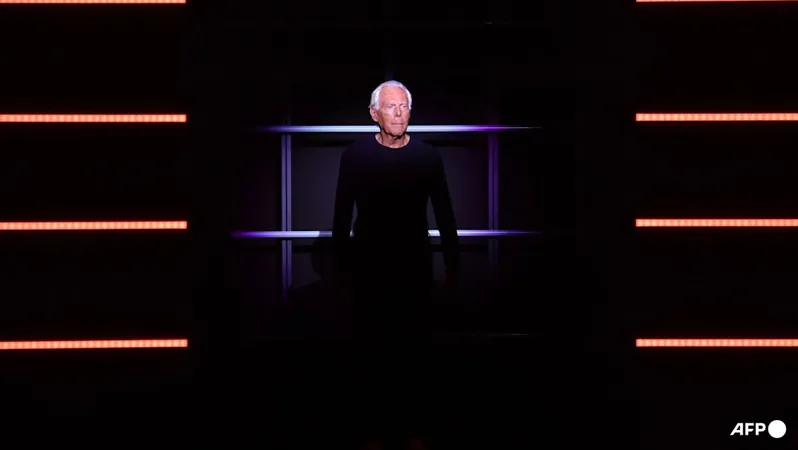
Unlocking the Universe: How Fast Radio Bursts Are Helping Scientists Map Missing Matter
2025-09-19
Author: Nur
In early 2024, a team of researchers at McGill University, led by doctoral student Vishwangi Shah, stumbled upon an extraordinary find while examining data from the Canadian Hydrogen Intensity Mapping Experiment. They traced a peculiar pulse of energy, known as a fast radio burst (FRB), to the fringes of a seemingly "dead" galaxy, a region expected to be eerily quiet—yet it was emitting powerful, energetic waves.
Baffled by this unexpected discovery, the team meticulously reviewed their calculations for errors. The results were clean, suggesting a groundbreaking implication: this FRB could be the key to deciphering a puzzling cosmic mystery—a significant portion of the universe's "ordinary" matter has been missing.
The Missing Matter Dilemma
Ordinary matter, or baryonic matter, consists of particles like protons and neutrons, forming everything we interact with, including stars, planets, and even ourselves. It’s estimated to constitute about 5% of the universe’s total mass and energy. However, scientists have only detected roughly 70% of what should exist, leading to what’s known as the "missing baryon problem." Astrophysicists like Manisha Caleb from the University of Sydney have described this as a cosmic bookkeeping issue.
The hunt for these elusive baryons has frustrated scientists for decades. Many believed they could be found in wisps of hot plasma spread thinly between galaxies, a substance so faint it eludes conventional observational tools. Finding baryonic matter would either confirm or challenge established models of the Big Bang.
A Game-Changing Discovery
Fast radio bursts, first discovered in 2007 by astronomer Duncan Lorimer, are incredibly energetic pulses that release more energy in milliseconds than the Sun does in days. Initially, researchers chased down their origins, hypothesizing they emanated from young magnetars—highly magnetized neutron stars. However, Shah's revelation that an FRB came from an ancient galaxy shifted perspectives, suggesting older stars might also be responsible for these phenomena.
As scientists probe these cosmic flashes, they are unveiling a new method to locate the missing baryons. Because FRBs can pass through baryonic matter without being slowed down by dark matter, they serve as powerful indicators of where this ordinary matter resides.
Further research confirmed that FRBs could be used to build a model of the universe’s baryonic structure. A 2025 study by Liam Connor and his team estimated that a staggering 76% of baryonic matter exists in the vast spaces between galaxies, effectively revealing their hiding spots.
Mapping Cosmic Structure
The understanding of baryonic distribution is crucial for unraveling the mysteries of supermassive black holes, star formation processes, and galaxy evolution. With detailed maps of baryonic matter, scientists could hypothesize how galaxies recycle gas and distribute elements throughout the cosmos.
Despite the vast number of FRBs recorded—thousands since the first discovery—only about 50 have been traced back to their origins. Researchers aim to increase this number dramatically for enhanced cosmic mapping.
With advanced detection systems like the Canadian Hydrogen Intensity Mapping Experiment and the Deep Synoptic Array 2000, astronomers project they will track the origins of over 10,000 FRBs annually. This research represents just the tip of the iceberg in utilizing FRBs to decode the universe’s mysteries.
A Vision for the Future
The ultimate goal? A comprehensive 3D map of the universe’s baryonic distribution akin to a "baryonic Google Maps." By connecting the dots between ordinary matter, stars, and dark matter, the cosmic landscape will reveal its hidden intricacies. As Caleb optimistically states, "This is just the beginning," paving the way for a future brimming with astronomical revelations.



 Brasil (PT)
Brasil (PT)
 Canada (EN)
Canada (EN)
 Chile (ES)
Chile (ES)
 Česko (CS)
Česko (CS)
 대한민국 (KO)
대한민국 (KO)
 España (ES)
España (ES)
 France (FR)
France (FR)
 Hong Kong (EN)
Hong Kong (EN)
 Italia (IT)
Italia (IT)
 日本 (JA)
日本 (JA)
 Magyarország (HU)
Magyarország (HU)
 Norge (NO)
Norge (NO)
 Polska (PL)
Polska (PL)
 Schweiz (DE)
Schweiz (DE)
 Singapore (EN)
Singapore (EN)
 Sverige (SV)
Sverige (SV)
 Suomi (FI)
Suomi (FI)
 Türkiye (TR)
Türkiye (TR)
 الإمارات العربية المتحدة (AR)
الإمارات العربية المتحدة (AR)